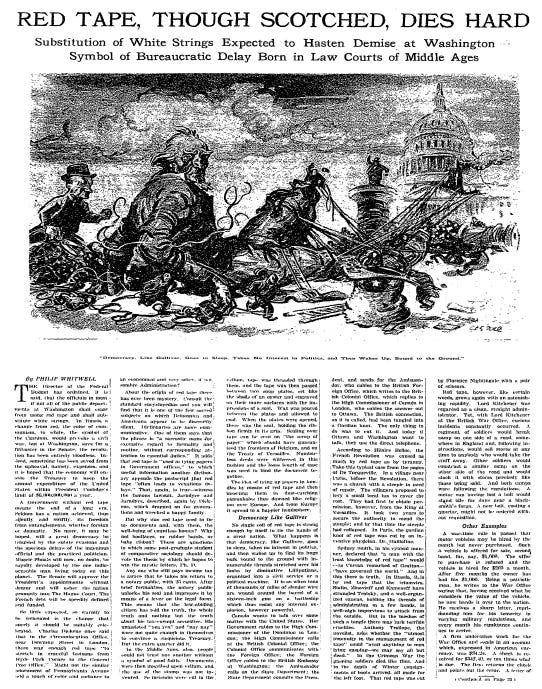Red Tape, Though Scotched, Dies Hard
A century before Elon Musk's DOGE (Department of Government Efficiency), in 1925, a New York Times Magazine article complained of government bloat. But the examples cited then were comparatively minor compared to today, like spending $30 on a scale map.
The journalist Philip Whitwell wrote:
Perhaps the best example of red tape has occurred over a proposal to make an international map of the world on the scale of one to one million. Fifteen years ago this scheme was started at a conference in Switzerland. Three years thereafter, the British Foreign Office asked the State Department at Washington if the United States would be prepared to contribute $30.
The State Department consulted the Department of the Interior, which approved of the financial liability suggested. Congress was asked for the appropriation, but in 1916 there happened to be a war in Europe which reduced many maps from certainties to guesses, and Congress quashed the grant.
Last fall, the United States was again asked if she would contribute $30 for a map of the world. Secretary Hughes [meaning Secretary of States Charles Evans Hughes] inquired, therefore, of Director Lord whether the expenditure could be included in the president's financial program. In a letter of 100 words, Director Lord replied in the affirmative.
Secretary Hughes next addressed the president in a letter of 500 words. President Coolidge, in a letter of 112 words, submitted the matter to Congress. As Senate Document 117, the correspondence was printed, doubtless at a cost exceeding $30.
The worry in 1925 was that the federal government would exceed its annual budget of $6 billion. For comparison, in fiscal year 2024, the federal budget was $6.75 trillion. That means the feds spent around $6 billion approximately every eight hours.
Red Tape, Though Scotched, Dies Hard: Substitution of White Strings Expected to Hasten Demise at Washington Symbol of Bureaucratic Delay Born in Law Courts of Middle Ages
Published: Sunday, March 22, 1925


